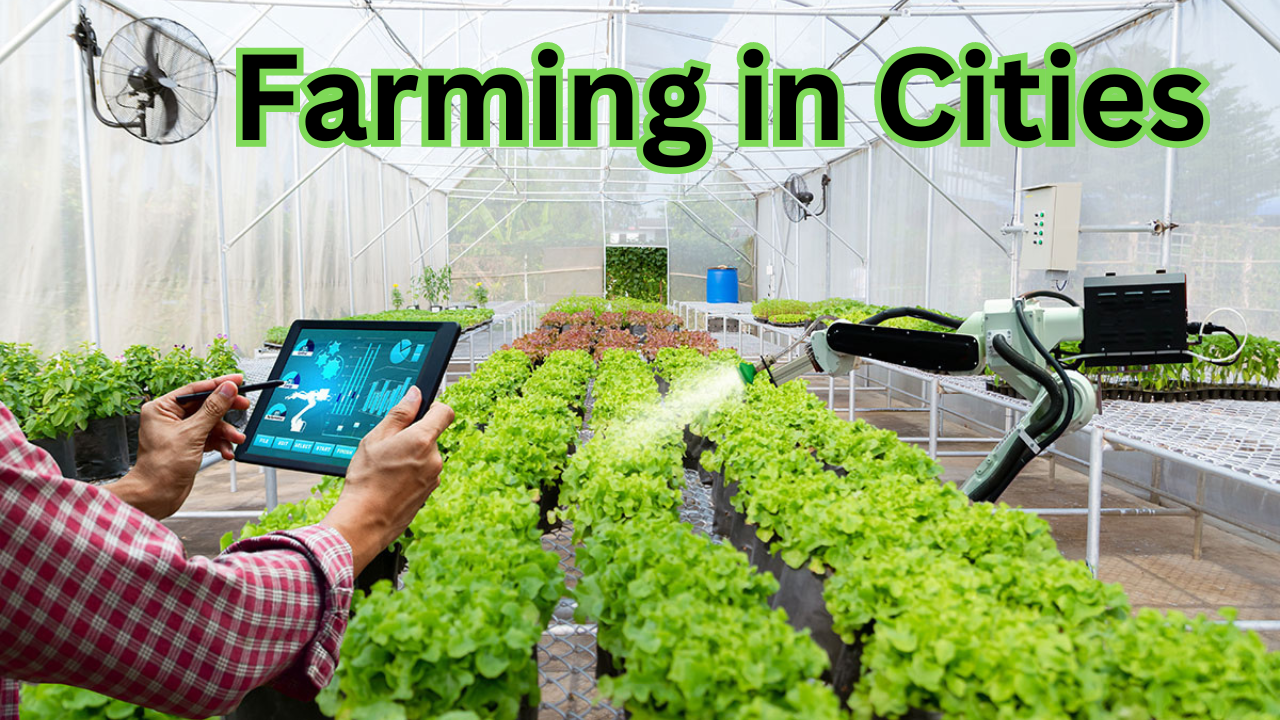For fresh food, people have to travel long distances to get the food and provide for the people, but imagine if you can get that fresh food in the heart of your cities, those fresh fruits and vegetables that you always yearn for could be just a few steps close to you and get them b. No long trips to the field of farms, and this isn’t a dream, it’s a new reality because urban farming is making it possible. In this article, we will see why the future of farming is moving to our cities and why it’s such a big deal.
What is Urban Farming?
Urban farming means growing food in cities without taking long trips to rural areas to collect food from there and then bring the food to cities. With the latest technology, we can grow food on our rooftops, empty lots, and indoor places without even needing sunlight because of the latest technology. We can now grow fresh food and produce it just where more people are living.
Why Urban Farming is great:
Fresher Food:
With growing food in cities people can get fresh food more closely albeit by traveling long distances to get fresh food, this can help remove pollution more because of less transportation, and growing food in cities means more fresh and tastier food just at your doorstep.
Smart Use of Space:
Cities may be crowded, however, city farming makes the most of the area. Techniques like vertical farming, and developing plant life in tall stacks, allow us to grow lots of food in a small area.
Eco-Friendly:
Urban farms use less water and no soil, making them better for the environment. They frequently use techniques like hydroponics and aeroponics that are extra sustainable.
Better Food Security:
Growing food in cities can have better food security for the people of cities, because what if the transportation system that brings food from faraway lands can’t bring it for any reason, then it should not be a problem for people of cities. People can still eat food grown nearby in the city.
Connecting with Others:
With farming in cities what can you do is make connections with your nearby people by talking about plants, and crops, asking for guidance from them, and even guiding them, working together. This will create bonding among communities that will last and people will live in harmony.
How Urban Farming Works:
Rooftop Gardens:
Rooftop gardens use the tops of buildings to grow food. These gardens assist in cooling down homes and give citizens of cities freshly grown food.
Vertical Farms:
Vertical farms stack flowers in layers inside homes. This makes it possible to grow a lot of food in a small area, even in crowded cities.
Indoor Farms:
Indoor farms use unique lighting and climate control to grow plants all year round. This is perfect for places with harsh climates or little outdoor space.
What’s next for Urban Farming?
As technology improves, urban farming becomes even more effective. We would possibly see farms in surprising places, like subway stations or on the sides of skyscrapers.
Fitting into the City:
In the future, urban farms might be a part of regular city life. Imagine farms in locations like community centers or office buildings, making fresh food even more available.
Global Impact:
Urban farming can make a huge difference around the world. It can help cities grow to be extra self-sufficient, reduce environmental impact, and make fresh food available to more people.
Conclusion:
City farming is becoming popular. It gives us fresh food, uses space well, and is good for the earth. More cities will start growing food. This will change how we get our food and make it better for everyone.
FAQs
1. What is urban farming and how does it work?
Urban farming involves growing food within city environments, utilizing spaces such as rooftops, empty lots, and indoor areas. Advanced technologies like vertical farming, hydroponics, and aeroponics allow food production in urban areas without the need for sunlight or extensive land, making fresh food more accessible within cities.
2. What are the benefits of urban farming?
Urban farming offers several advantages, including providing fresher food close to consumers, reducing the environmental impact of food transportation, making efficient use of limited city space, and enhancing food security. It also fosters community connections through shared agricultural activities and local produce.
3. How does urban farming contribute to environmental sustainability?
Urban farming is eco-friendly as it uses less water and no soil, employing sustainable techniques like hydroponics and aeroponics. These methods minimize waste and reduce the carbon footprint associated with transporting food from rural areas to cities.
4. What types of urban farming techniques are used?
Common urban farming techniques include rooftop gardens, which utilize building rooftops for food production; vertical farms, which grow plants in stacked layers inside buildings; and indoor farms, which use controlled lighting and climate to produce food year-round, regardless of external weather conditions.
5. What does the future hold for urban farming? The future of urban farming is promising with continued technological advancements. We may see farms integrated into unexpected urban spaces such as subway stations and skyscraper sides. This evolution will further enhance city self-sufficiency, reduce environmental impacts, and increase the availability of fresh food for urban populations.
